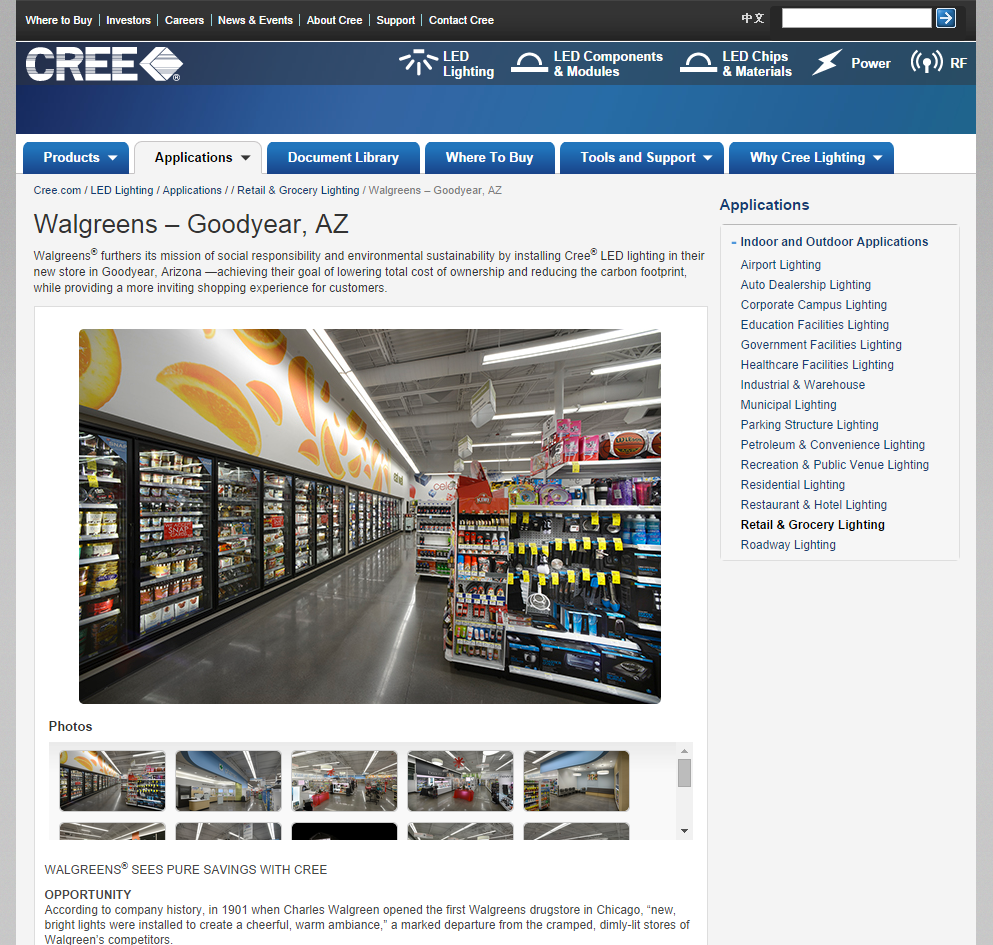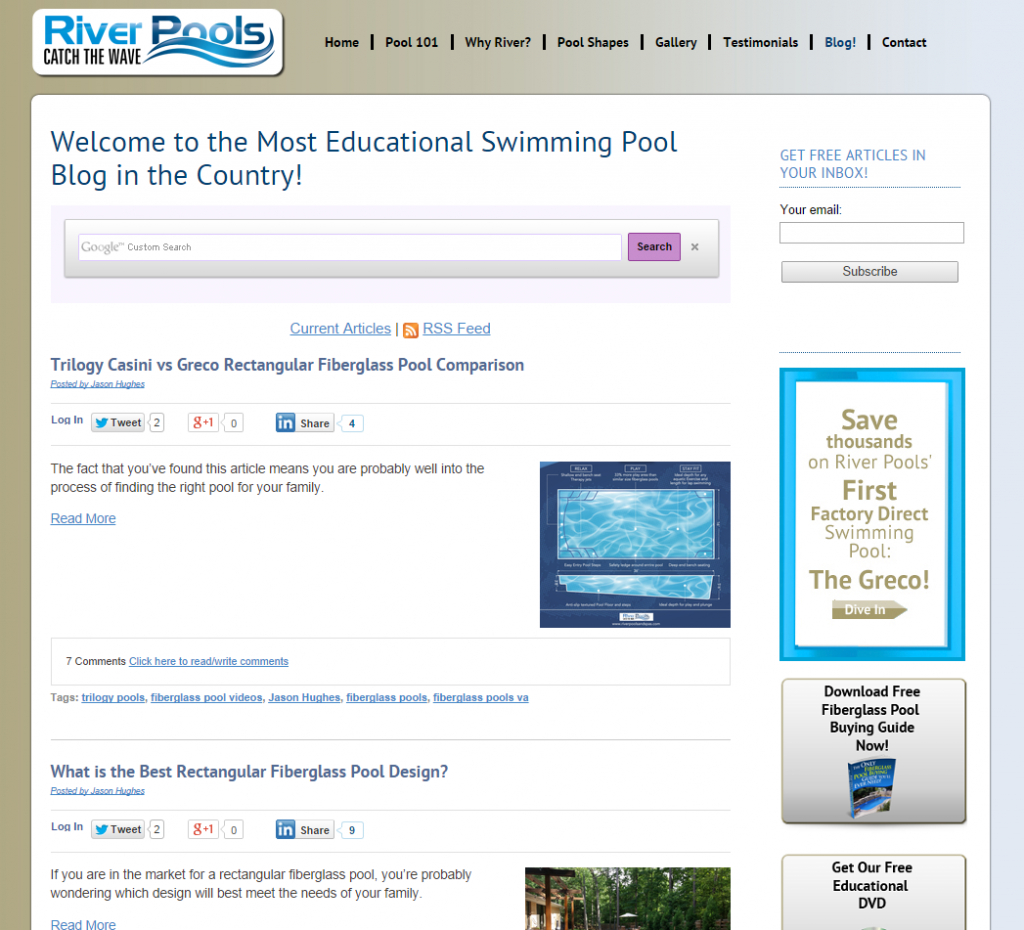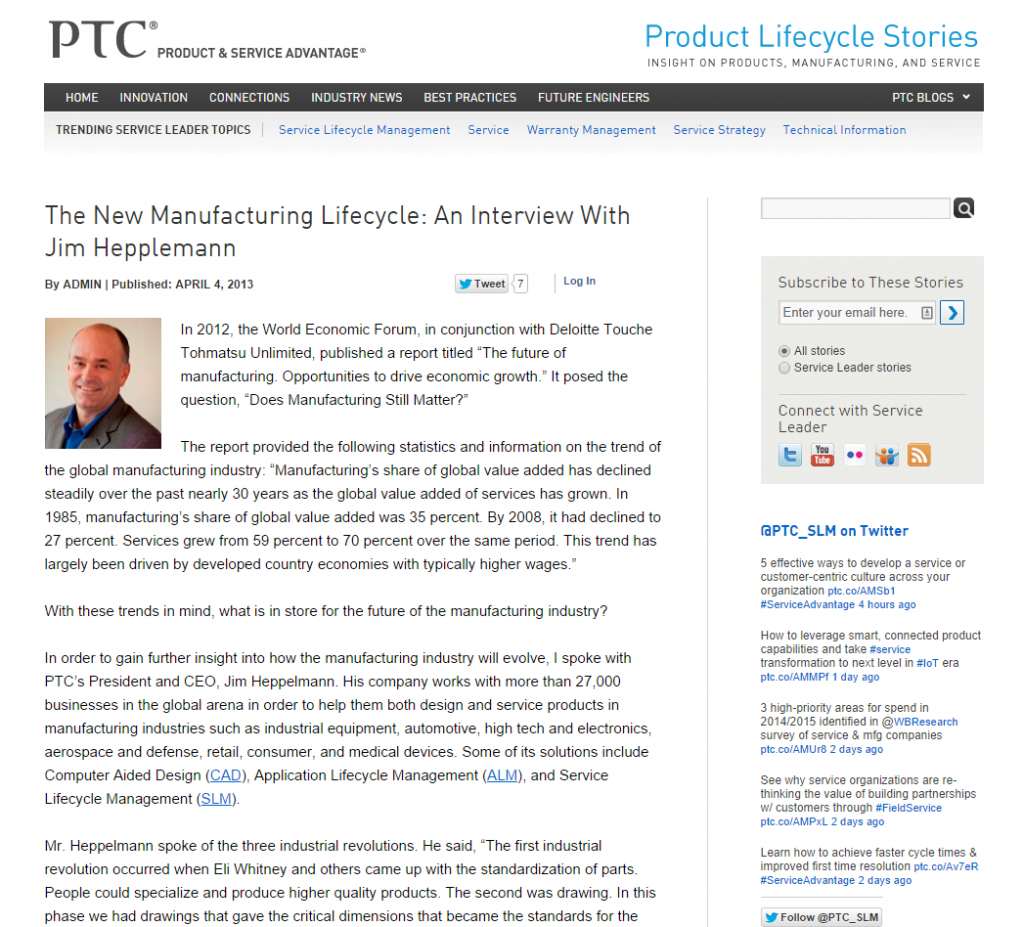 Say you’re a fashion retailer selling the latest styles online. When it comes to creating materials for your content marketing campaigns, the possibilities are virtually endless. You could put together colorful tutorials on how to wear new garments, interview well-known fashion experts, create videos commenting on recent trends or share images sent in by customers who are wearing your creations in the real world.
Say you’re a fashion retailer selling the latest styles online. When it comes to creating materials for your content marketing campaigns, the possibilities are virtually endless. You could put together colorful tutorials on how to wear new garments, interview well-known fashion experts, create videos commenting on recent trends or share images sent in by customers who are wearing your creations in the real world.
But let’s say you sell cement trucks. Maybe caulk guns. Or maybe even caskets. No matter how advanced your latest releases are, they’re never going to have the “sex appeal” of a lifestyle business or hot tech startup. But just because your business is “boring” doesn’t mean you can’t take advantage of the power of content marketing. Consider any of the following strategies for filling your content channels with new content:
Publish user case studies
First of all, it’s important to note that no industry is truly “boring” to its users. You might not think that the cement trucks you’re selling are as glamorous as the products that other businesses sell, but to somebody who’s buying a cement truck, you can bet that every little detail becomes pretty interesting!
With that in mind, one of the easiest ways to engage these consumers is to publish case studies detailing the ways that others are using your products. As an example, take the recent case study published by Cree Lighting on the use of its products in the Goodyear, AZ Walgreens store.

Certainly, lighting isn’t the sexiest of subjects. But in this instance, Cree still manages to keep things interesting for readers by showing off a hands-on application of it’s products. The company does a few things well in this post:
- It features tons of pictures as part of the case study – No matter what industry you’re in, images sell. After all, they don’t say “a picture is worth a thousand words” for nothing!
- It includes powerful quotes from actual users – Consider the quote, “The Cree® products really fit into what we were trying to do. What’s really differentiating Cree for where we are using their fixture is the efficacy of the fixture — the lumen output per watt. Total cost of ownership — that’s really the driver and where LEDs can make their mark.” If you were in the market for commercial lighting, it’d be hard to ignore something so powerfully stated.
- It focuses on the solution, not the sale – Overall, the tone of the case study is informative, clearly identifying the problem Cree faced and the solution they implemented without veering too far into “sales-y” territory. This prevents readers from being put off by a blatant sales pitch and tuning out before Cree can deliver its information. اسرار ماكينة القمار
If you’re going to create your own case studies to help fill out your content marketing campaigns, there are a few things you’ll want to keep in mind:
- Choose your subjects carefully – In order to create a valuable case study, the subject of your study must be somebody who is a) enthusiastic about your products, and b) eloquent enough to turn this enthusiasm into digestible sound bites. Not all potential case study subjects meet these criteria, so you may need to interview a few people before you get responses that will work for this format.
- Flesh out your case studies – The Cree Lighting case study pictured above is particularly effective because of its use of images. Whenever possible, include “before and after” pictures, pictures of finished products or even videos documenting your company’s solutions. While text is important, these types of multimedia files are particularly effective when it comes to engaging viewers (and eventually converting them into buyers).
- Don’t cheat the system – If you don’t have any good case studies on hand, you might find it tempting to create fake testimonials or to put better words in the mouths of the subjects you have interviewed. Don’t do it! If you’re ever caught in this type of lie, your credibility will suffer on a far greater level than you stand to benefit by using false case studies on your website.
Keep these guidelines in mind and get to asking your past customers if they’re willing to participate in a case study. If you’ve done a good job, you’ll be surprised by the number of people that jump at the opportunity to share their experiences. لعب روليت حقيقي
Answer questions
I don’t care what field you’re in – your prospective customers have questions that need to be answered before they feel comfortable moving forward with the buying process. This is true whether you’re in the world’s most boring field or its most exciting. As a result, a sure-fire way to create content for any industry – “boring” ones included – is to produce marketing materials that answer questions.
One person that does this well is Marcus Sheridan of River Pools and Spas. Take a look at his company’s blog page below:

Look at the second blog post listed there – “What is the Best Rectangular Fiberglass Pool Design?” Is that the world’s most fascinating blog post topic? Definitely not. But is it a question that many of his customers are probably asking when they’re thinking about having a pool installed? Absolutely! The topic itself may be “boring,” but it still provides important information that serves would-be customers well in their decision-making process.
Sheridan’s approach to creating content by answering questions has been so powerful that he credits the technique with saving his company from the cuts in consumer spending that followed the great recession. In an interview with the New York Times, he shared the theory underpinning his strategy, stating:
“I just started thinking more about the way I use the Internet. Most of the time when I type in a search, I’m looking for an answer to a specific question. The problem in my industry, and a lot of industries, is you don’t get a lot of great search results because most businesses don’t want to give answers; they want to talk about their company. So I realized that if I was willing to answer all these questions that people have about fiberglass pools, we might have a chance to pull this out.”
Getting started with Sheridan’s approach is incredibly easy, but there are a few things you’ll want to keep in mind:
- Kick-start the process with a brainstorming workshop – If you think that your business is too “boring” for this technique, think again. There’s simply no business out there that doesn’t have its own set of frequently asked customer questions. To find yours, take an afternoon away from your computer and look at your product offerings as if you were a customer. Write down everything you can think of, and I’m betting that you’ll have at least 25-50 questions within a few hours. Every one of those ideas can be turned into a content piece for your blog, website or social profiles.
- Involve members of your staff across all levels – Depending on your role in your company, bear in mind that you may not be the best person to handle this brainstorming. So if you’re struggling to come up with anything, why not ask your customer service reps who interact directly with potential buyers? How about your R&D team that’s constantly getting feedback on your product’s different features and benefits? Your team members may be able to contribute a substantial number of ideas, so get them involved from the start.
- Answer questions using different media formats – Answering the questions you find using written text is fine, but publishing pictures, Vine videos or YouTube clips that do the same can be ten times more powerful. Given the additional resources required to create these materials, you may not want to use these formats for every question you answer. But incorporating them into your content marketing campaigns from time to time is a great way to connect with different types of consumers.
- Be honest – One of the reasons many businesses shy away from this technique is that their honest answers don’t always position their companies in the best light. Take the example above of the blog post titled “What is the Best Rectangular Fiberglass Pool Design?” Now, suppose the best design is one that Sheridan’s company doesn’t offer. While he might be tempted to lie and include his designs in the list, it’s better to be honest. Publish answers to questions that position your business in the best possible light, but don’t shy away from those that don’t. كيف تربح المال من الإنترنت Honest answers will earn you an enthusiastic following that’s more likely to recommend you to others for the things that you do well.
The real beauty of this strategy is that any company can apply it at any time. If you’re struggling to come up with content ideas for your “boring” business, answering questions is absolutely one of the best places to start.
Conduct interviews
One final content creation strategy that’s universal to all industries and all types of consumers is the expert interview. The concept is simple: find an expert that your audience knows and respects, interview him or her, and post the resulting content on your website. You get content that’s pretty much built for you, your readers get invaluable advice and your website gets the added reputation boost of being associated with a known leader.
To see this strategy in action, check out a blog post titled “The New Manufacturing Lifecycle: An Interview with Jim Hepplemann” on the PTC blog:

PTC is a software company that offers a popular CAD tool called Creo, as well as other product lifecycle management solutions – definitely not the most exciting technology on the market today! But even though some might view this industry as being “boring,” the reality is that, for the people who need this type of solution, interviews with thought leaders who can provide valuable insight – like the published piece produced with Jim Hepplemann – are far from boring.
Creating your own interview-style content requires a bit more legwork than answering questions or featuring case studies you already have. However, the results may be well-worth your effort, as it’s likely that the experts you interview will help in the promotion process by sharing the final product with their own followers. Here’s how to get started with expert interviews:
- Choose your expert – The first thing you’ll need to create an authority figure interview is, well, an authority figure! Start by creating a list of all the well-known names in your industry, from the top dogs down to those with smaller followings. Then, reach out and ask for an interview. Don’t be surprised if you get turned down by your industry’s biggest influencers, but don’t be afraid to ask either. If you time your request right (for example, when the expert has a new product coming out) and make an effort to build a relationship before making the request, you might be surprised by the interviews you’re able to secure.
- Choose your format – The PTC case study above is a simple blog post containing the responses provided by the industry expert. But written text isn’t the only way you can go. Audio or video interviews are relatively easy to create as well using tools like Audacity for audio files or Pamela for recording video interviews over Skype.
- Do your homework – If you’re going to go to all the trouble of setting up an expert interview, don’t look unprofessional by coming unprepared! Take at least 2-3 hours to read your expert’s most recent blog posts, check for any press releases put out about his or her latest accomplishments and see what’s new on LinkedIn. While you’ll prepare questions in the next step of this process, doing your homework will make you more confident in your ability to speak extemporaneously or fill in any gaps that occur on the interview.
- Prepare your questions – To give your interview some structure, no matter what format you’re using, take the time to put together at least 10-20 possible questions to ask. Make your questions open-ended (“yes or no” questions will cut your interview short) and include questions that speak to a few different subject areas to help get the most information possible out of your interview subject. Remember, it’s better to be over-prepared with questions that don’t get answered than to have too few on hand and get stuck with dead air!
- Polish your final product – Once you’ve captured your interview, take the time to polish your final product before releasing on your website or social profiles. If you’re producing audio or video files, consider including opening music and an intro statement, rather than just launching customers into the interview. Or, if you’re publishing your interview as a blog post, punch it up with pictures of your subject and other supporting materials.
When it comes down to it, there are no truly “boring” industries. Every field is interesting in some way to its customers and the companies that supply it. If you find yourself stumped for content creation ideas, give these three strategies a try. Whether you decide to publish case studies, answer customer questions or produce helpful expert interviews, you’re sure to come up with something that interests your unique audience!



